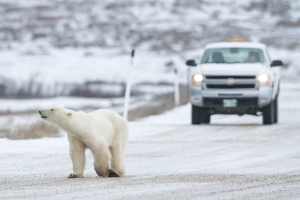Aerial view of Nimmo Bay Resort. (Photo: Dax Justin/Canadian Geographic)
I had never been to the Great Bear Rainforest, so when Canadian Geographic offered to send me to Nimmo Bay with the iconic outdoor clothing brand Filson, I of course agreed to take the assignment, but first promised myself that I wouldn’t Google photos of the location or do any recon at all. I wanted to go in blind, without preconceived ideas, and be completely immersed.
To celebrate the launch of their first Canadian store in Vancouver, Filson decided that rather than throw any old party, they would give a group of writers and photographers an immersive wilderness experience: two days in the rainforest, using Filson gear for its intended purpose — specifically, testing it in the climate of the Great Bear Rainforest.
Upon landing, we’re greeted by Fraser Murray and family, who own and operate the resort. Nimmo Bay is one of the world’s first eco-lodges and I can see right away that we’ve landed in a paradise handmade with love. The people of Nimmo Bay share a strong bond with nature and have dedicated themselves to wilderness conservation, eco-tourism, culture, and sustaining what is real and beautiful. You can see first-hand the importance to the Murray family of the integration of the natural and man-made. The wooden chalets are beautifully designed and seem to float on the water’s edge. A cedar hot tub is strategically placed beneath, and in perfect harmony with, a towering waterfall. The lodge itself is filled with Indigenous artwork in the local style. A Pelton wheel turbine produces enough renewable energy to run the lodge completely off-grid.









